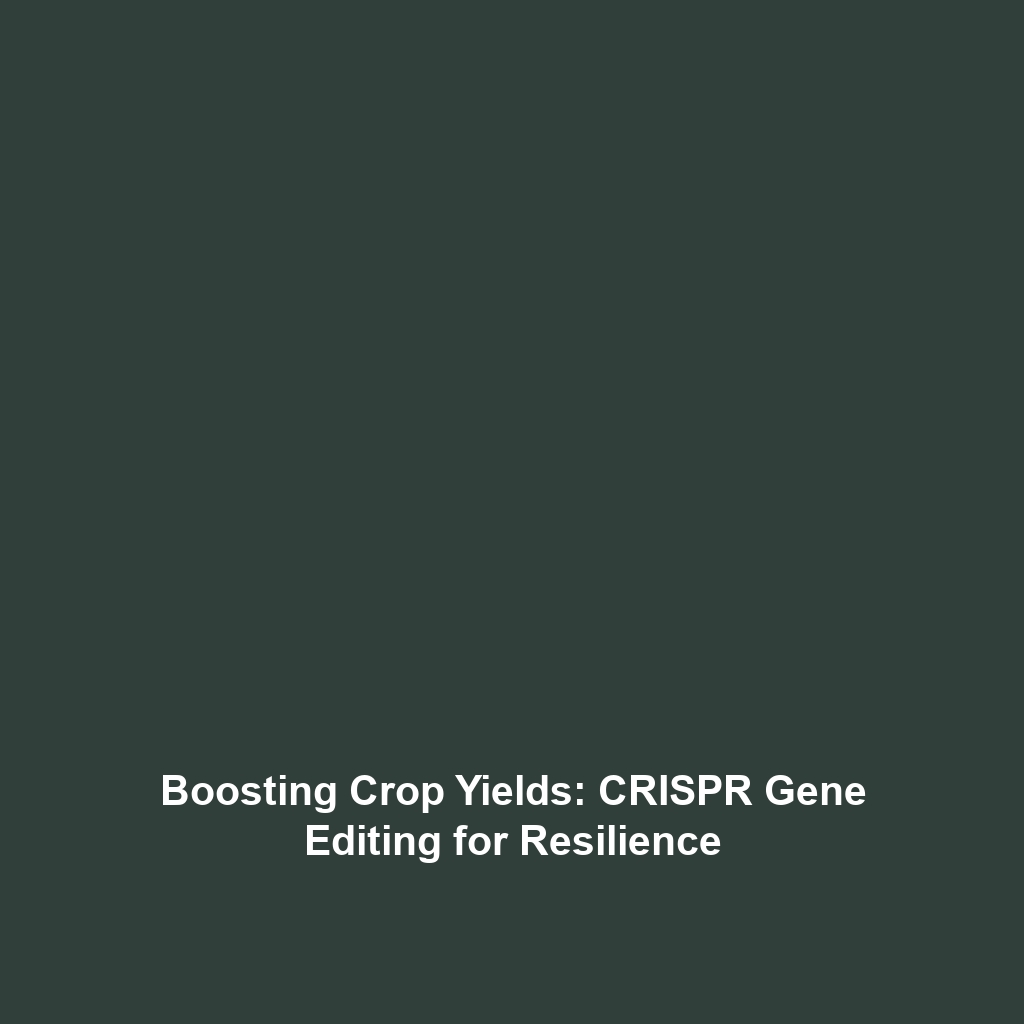CRISPR Gene Editing: Enhancing Crop Yield, Disease Resistance, and Drought Tolerance
Introduction
In an era marked by climate change and a growing global population, the need to enhance agricultural productivity is more crucial than ever. Editing crops for better yield, disease resistance, and drought tolerance is a significant focus within CRISPR Gene Editing. This groundbreaking technology enables scientists to precisely edit the genetic makeup of plants, leading to improved agricultural outcomes. By harnessing the capabilities of CRISPR, researchers aim to develop crops that not only produce higher yields but also resist diseases and thrive in harsh, drought-prone environments.
Key Concepts
Understanding the principles behind Editing crops for better yield, disease resistance, and drought tolerance is essential in the broader scope of CRISPR Gene Editing. Key concepts include:
- Gene Editing: The targeted alteration of specific genes to enhance desired traits in crops.
- CRISPR-Cas9 Technology: A revolutionary tool that allows for accurate, efficient modification of genetic material in various organisms, including plants.
- Phenotypic Traits: Observable characteristics, such as improved yield and resistance to diseases, achieved through genetic modifications.
Applications and Real-World Uses
The applications of Editing crops for better yield, disease resistance, and drought tolerance are vast, showcasing the real-world effectiveness of CRISPR Gene Editing. Some notable examples include:
- Rice Improvement: Genetic alterations have resulted in rice varieties that withstand flooding and yield more grain.
- Wheat Resistance: CRISPR has been utilized to develop wheat that is resistant to powdery mildew, significantly reducing crop losses.
- Improved Soybeans: Genetic modifications have enhanced drought tolerance in soybean crops, ensuring better survival rates during dry spells.
Current Challenges
Despite the promising potential of Editing crops for better yield, disease resistance, and drought tolerance, there are several challenges associated with its study and application within CRISPR Gene Editing:
- Lack of widespread regulatory frameworks addressing the use of genetically edited crops.
- Public perception and acceptance of genetically modified organisms (GMOs) remain contentious.
- Potential ecological impacts need thorough investigation to ensure the sustainability of edited crops.
Future Research and Innovations
The future of Editing crops for better yield, disease resistance, and drought tolerance within the context of CRISPR Gene Editing holds great promise. Upcoming innovations include:
- Next-Gen CRISPR Techniques: Development of more precise gene-editing tools that reduce off-target effects.
- Integration of AI: Utilizing artificial intelligence to predict the outcomes of genetic modifications, streamlining the editing process.
- Research on Epigenetics: Exploring how environmental factors may influence gene expression in edited crops, leading to better adaptation mechanisms.
Conclusion
Editing crops for better yield, disease resistance, and drought tolerance represents a critical advance in CRISPR Gene Editing, promising to transform the agricultural landscape. As research progresses and technology evolves, the potential to feed a growing population sustainably becomes increasingly attainable. Stakeholders in agriculture, policy-making, and research must collaborate to address the challenges and maximize the benefits of this powerful technology. For further reading on the applications and implications of CRISPR technology, explore our other articles on gene editing innovations.
